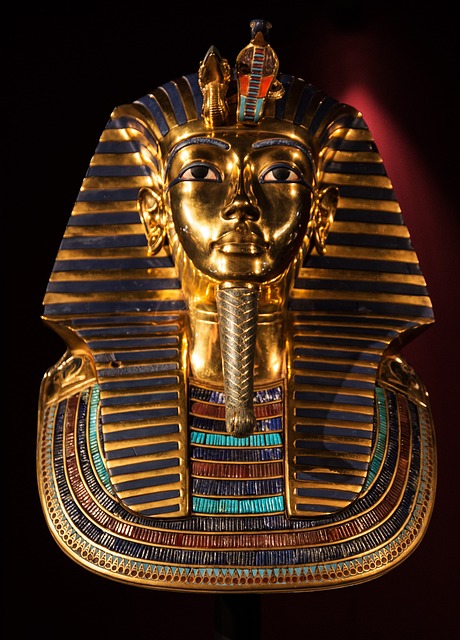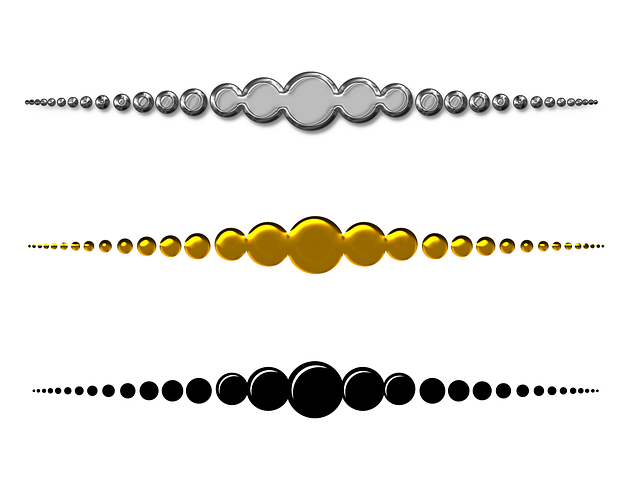
A 401(k) to Gold IRA rollover is a strategic financial maneuver for individuals looking to diversify their retirement investments with precious metals while maintaining the tax-advantaged status of their savings. This process involves transferring funds from an existing 401(k) into a Gold IRA, allowing for investment in gold, silver, platinum, and palladium. To execute this move, one must carefully navigate IRS guidelines, choosing between direct or indirect rollovers within the 60-day window to avoid penalties. Selecting a reputable custodian who specializes in precious metals is crucial for safeguarding your investment, adhering to purity standards, and ensuring compliance with IRS regulations. The decision of which type of rollover to pursue—direct or indirect—and the choice of custodian should be made after considering their fee structures, history of successful outcomes, customer service capabilities, and robust compliance measures. This transition can offer a broader investment scope and potentially enhance your retirement portfolio's stability and growth potential within the framework of IRS regulations. Remember to consult with financial experts or tax professionals to navigate this process effectively and to understand the specific rollover rules that apply to your situation, whether it's a traditional or Roth 401(k).
Considering the uncertainties in traditional investment markets, many retirees are exploring alternative avenues for securing their financial future. A Gold IRA rollover from a 401(k) is one such strategy that can offer diversification and potential protection against inflation and market volatility. This article serves as a comprehensive guide, navigating you through the essentials of transitioning your retirement savings into a Gold IRA. We’ll delve into the step-by-step process, including eligibility, tax considerations, selecting a custodian, and the types of gold permissible in an IRA. Key factors such as storage options, IRS regulations, and fee structures will be demystified to ensure you make informed decisions. Additionally, we’ll highlight top precious metals for your IRA, explore strategies for maximizing benefits post-rollover, and provide expert insights on optimizing retirement savings. By understanding the nuances of a 401(k) to Gold IRA rollover, you can confidently diversify your portfolio and potentially enhance your financial security in retirement.
- Understanding the Basics of a Gold IRA Rollover from a 401(k)
- The Step-by-Step Process of Executing a 401(k) to Gold IRA Rollover
- – Assessing Eligibility and Tax Implications
- – Choosing a Trustworthy Precious Metals Custodian
- – Initiating the Rollover with Your Current 401(k) Plan Administrator
Understanding the Basics of a Gold IRA Rollover from a 401(k)

When transitioning from a traditional 401(k) plan to a Gold IRA, understanding the process of a rollover is crucial for ensuring that your retirement savings are managed effectively and in accordance with IRS regulations. A 401(k) to Gold IRA rollover involves transferring funds from your existing 401(k) account into a Gold IRA, allowing you to diversify your investment portfolio with physical gold, silver, platinum, and palladium. This type of rollover is not a direct exchange but rather a process where you receive a distribution from your old 401(k), which you then have 60 days to deposit into your new Gold IRA account. It’s imperative to adhere to the IRS rules during this timeframe to avoid penalties and taxes.
The 401(k) to Gold IRA rollover should be carefully planned, as it involves several steps. Firstly, you must decide if a rollover is the right choice for your financial situation and retirement goals. Once confirmed, contact your current 401(k) plan administrator to initiate the distribution process. You’ll receive a check made payable to you, which you must then forward to your selected Gold IRA custodian within two months to complete the rollover. Throughout this process, it’s advisable to work with reputable financial advisors or institutions specializing in Gold IRAs to navigate the specific requirements and ensure compliance with IRS rules, thereby safeguarding your retirement savings from unnecessary taxes and fees associated with early withdrawals.
The Step-by-Step Process of Executing a 401(k) to Gold IRA Rollover

When transitioning from a traditional 401(k) plan to a self-directed Gold IRA, a rollover is a strategic move that can diversify your retirement portfolio to include precious metals. The process of executing a 401(k) to Gold IRA rollover involves several key steps to ensure compliance with IRS regulations and to safeguard your retirement savings. Initially, you must request a distribution from your current 401(k) plan administrator. This distribution should be directly rolled over into a new Gold IRA account to avoid tax implications associated with early distributions. Ensure that the funds are transferred in accordance with an indirect rollover, where the funds are temporarily sent to you, and then you deposit them into your new Gold IRA within 60 days.
Upon establishing a new Gold IRA with a reputable custodian specializing in precious metals, you will need to complete the necessary paperwork. This includes opening a new IRA account, selecting a trustee or custodian for the account, and providing instructions on how you wish to invest your funds. The chosen custodian must adhere to IRS rules regarding the types of gold and other precious metals that can be held within a Gold IRA—typically including gold bullion, coins, bars, and sometimes silver, platinum, and palladium. Once the new account is set up, your 401(k) funds will be transferred directly from your previous employer’s plan to your new Gold IRA, thereby completing the rollover process. Throughout this procedure, it is crucial to maintain precise records and adhere to all deadlines to ensure a smooth transition to your Gold IRA with the assets from your 401(k) plan.
– Assessing Eligibility and Tax Implications

Navigating a 401(k) to Gold IRA rollover requires careful consideration of eligibility and tax implications, which are pivotal elements in this financial transition. Eligible individuals typically include those with existing 401(k) accounts who wish to diversify their retirement portfolio by investing in precious metals. It’s crucial to determine if you fall within the Internal Revenue Service (IRS) guidelines for rollovers, which stipulate that one rollover can be completed per every 365 days to avoid penalties and negative tax consequences. The tax treatment of a rollover depends on the type of 401(k) distribution you receive—traditional or Roth. For a traditional 401(k), the amount rolled over into a Gold IRA is generally tax-free if you’re over 59 and a half years old; otherwise, it’s subject to taxes. Conversely, distributions from a Roth 401(k) are already taxed, so the rollover itself may not incur additional taxes.
When executing a 401(k) to Gold IRA rollover, you have two main options: a direct rollover or an indirect (60-day) rollover. The direct rollover is straightforward, with funds being moved directly from the 401(k) custodian to the Gold IRA custodian, thus avoiding any taxable event during the transaction. In contrast, the indirect rollover involves receiving a distribution from your 401(k), which you then have 60 days to deposit into your new Gold IRA account. This method requires meticulous timing and coordination with your financial institutions to avoid taxes and penalties. It’s imperative to consult with a financial advisor or tax professional to ensure compliance with IRS regulations and to optimize the tax benefits associated with rolling over your 401(k) to a Gold IRA.
– Choosing a Trustworthy Precious Metals Custodian

When transitioning from a traditional 401(k) to a Gold IRA rollover, selecting a trustworthy precious metals custodian is paramount. A reputable custodian will not only safeguard your investment but also facilitate the process in compliance with IRS regulations. These entities specialize in holding and managing the assets within your Gold IRA, ensuring they meet the purity and quality standards set forth by the IRS for acceptable precious metals. They provide valuable services such as record-keeping, transaction oversight, and asset management, all of which are crucial for a seamless transition. When searching for a custodian, look for those with a proven track record, transparent fee structures, and a robust compliance framework. Additionally, they should offer exceptional customer service to assist you through each step of the rollover process. Due diligence is key; verify their credentials, read client reviews, and compare their services to make an informed decision that aligns with your retirement goals and objectives when considering a 401(k) to Gold IRA rollover.
– Initiating the Rollover with Your Current 401(k) Plan Administrator

transitioning your retirement savings from a traditional 401(k) plan to a Gold IRA can be a strategic move for diversifying your investment portfolio and safeguarding against inflation. To initiate this process, you’ll need to engage with your current 401(k) plan administrator. The first step involves contacting your administrator to obtain the necessary forms and guidance specific to rolling over funds into a Gold IRA. This is typically referred to as a “401k to Gold IRA rollover.” Ensure you request a direct rollover, which directly transfers your funds without any tax implications, as opposed to an indirect rollover that may incur taxes and penalties if not handled correctly. Your administrator will provide you with a distribution form that designates the receiving custodian for your Gold IRA. It’s crucial to complete this form accurately and return it promptly to avoid delays in the transfer process.
Once the distribution form is submitted, your former employer’s plan administrator will send the funds to the trustee or custodian of your new Gold IRA account. The receiving entity must be an IRS-approved custodian who specializes in precious metals. After the transfer is complete, you’ll receive a confirmation from both your old 401(k) plan and your new Gold IRA custodian. This confirmation serves as documentation that your rollover funds have been successfully transferred, allowing you to begin exploring the benefits of gold and other precious metals within your retirement portfolio. Remember to review all terms and conditions associated with your Gold IRA carefully, ensuring compliance with IRS regulations throughout this transition.
Navigating a 401(k) to Gold IRA rollover can be a strategic move for securing financial stability in retirement. This guide has demystified the process by outlining the essential steps to consider, from evaluating eligibility and understanding tax implications to selecting a reputable precious metals custodian and initiating the rollover with your plan administrator. By following these clear directives, you can effectively transition your retirement savings into a Gold IRA, potentially diversifying your portfolio and hedging against inflation and market volatility. Remember that a well-planned Gold IRA rollover is key to safeguarding your financial future. For those looking to secure their nest egg with the stability of gold, this comprehensive overview serves as an indispensable resource in making an informed decision for your 401(k) to Gold IRA rollover.







